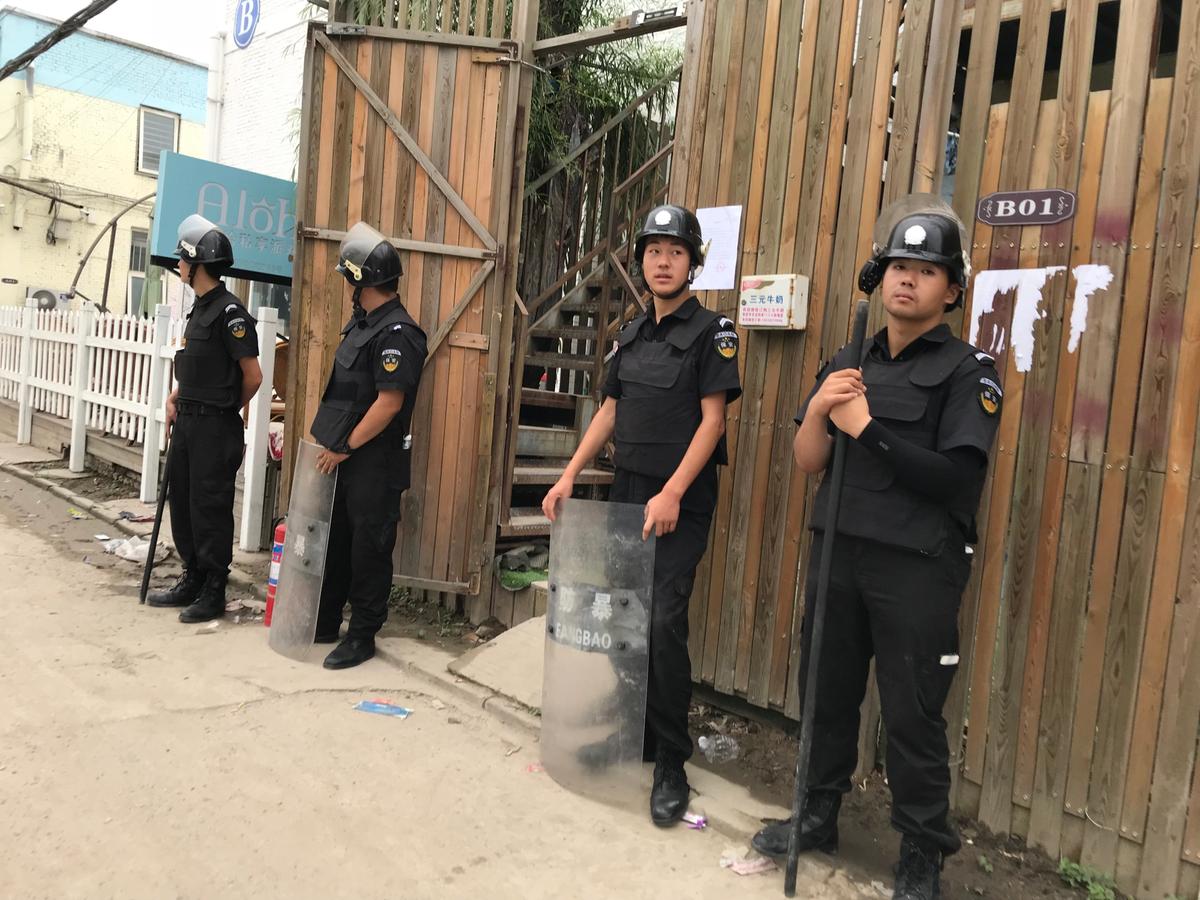Scores of Beijing police, clad in riot gear and rain slickers, were seen yesterday marching artists out of the Luomahu, or Roma Lake, Art District ahead of its sudden demolition, purportedly under the auspices of China’s sweeping campaign against organised crime. Similarly, about 30 riot police moved into Beijing’s Huantie Art District on Sunday (7 July) to begin eviction of the several hundred artists with studios there.
Notices were only posted in Huantie on Sunday, and “the government just gives us seven days” to move, says Canon Duan, an artist with a studio at Huantie. Images of the notice from the Jiangtai Village Management that were plastered around the district shared with The Art Newspaper attribute the abrupt removal to a government crackdown on mafia activity; the text likens artists to “security problems" and "unstable factors”.
“They are driving us all away on the excuse of cleaning up the underworld," Duan says. “We're not prepared at all. And no one has explained it to us." The notices also caution artists to remain at their own risk after seven days, adding that their property could be confiscated by the government.
Duan has had a studio at Huantie for four years and some of her neighbours have worked there nearly a decade. “We invested a lot of money in the renovation, we paid the rent, we were here for many years. But there is no option for compensation, nor any acceptable explanation.”
Since the police arrived Sunday, “they don't allow photographs, or express deliveries or food takeout, and security guards are going from door to door", Duan says. "We have no human rights here.”
Huantie, a complex of converted old factories, is located about 2.5 km from the Ai Weiwei-designed studio and gallery district Caochangdi, which also underwent a partial eviction and demolition last year of galleries on land belonging to the Railway Ministry. In 2017, an artists’ cooperative there called Iowa was demolished. Prior demolitions, including of Zuoyou Art District and Ai Weiwei’s second Beijing studio there, have been attributed by authorities to an ongoing reconstruction of the capital into a megalopolis combined with nearby city of Tianjin and province of Hebei; the reason given now is the campaign against gang crime, a three-year effort now receiving particular emphasis.
Caochangdi’s Village Management posted on 2 July announcements of a three-phase campaign to demolish illegal constructions, as part of a 100-day operation from 20 May to 31 August this year. Phase 1, from 1 to 12 July, will see the demolition of private buildings on the west side of the South Fifth Street and the north side of the West Second Road of the area. Phase II, due to begin next week, will clear the main streets and Phase III in late July will clear the small alleys. The area’s remaining galleries and studios are still considered legal structures, say the artists in residence there, so they should not be impacted.
Roma Lake, thus named because it is between the Luoge and Matou Villages, is situated in the Shunyi District near the Beijing International Airport, 25 km from 798. With the demolition of so many studio areas in Chaoyang District near the 798 Art District, more and more artists are relocating to the remote Shunyi, which is home to many expatriate villas and international schools. Roma Lake was given a tribute in a show at ShanghArt Gallery’s Beijing location this spring by artist Zhao Yang, who lived near the lake for two years and documented its passing seasons and the surreptitious skaters and swimmers of its waters.


